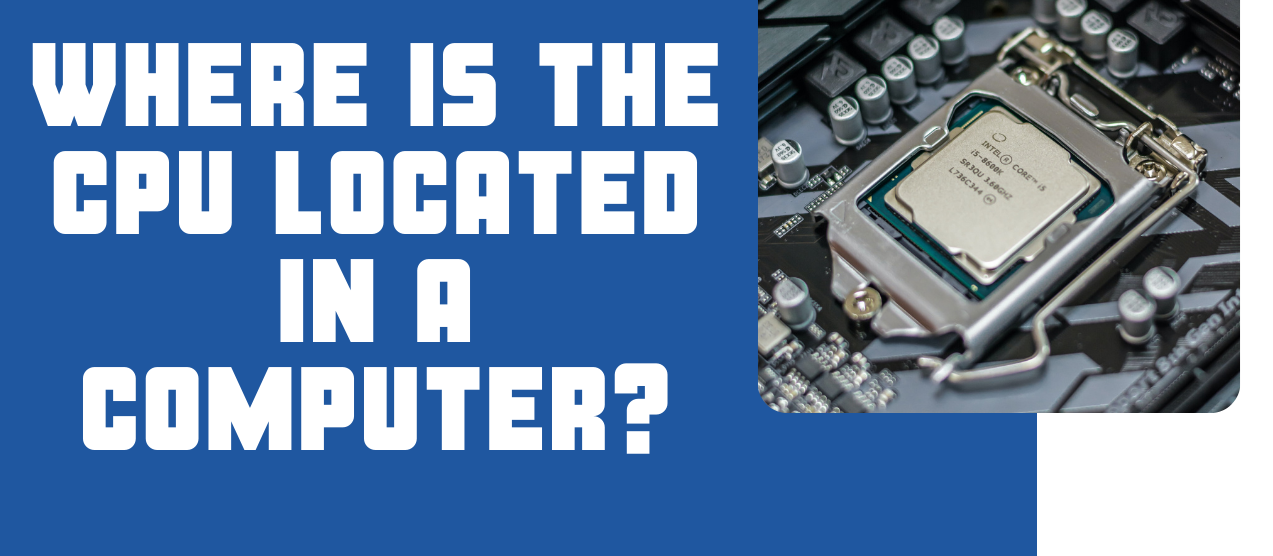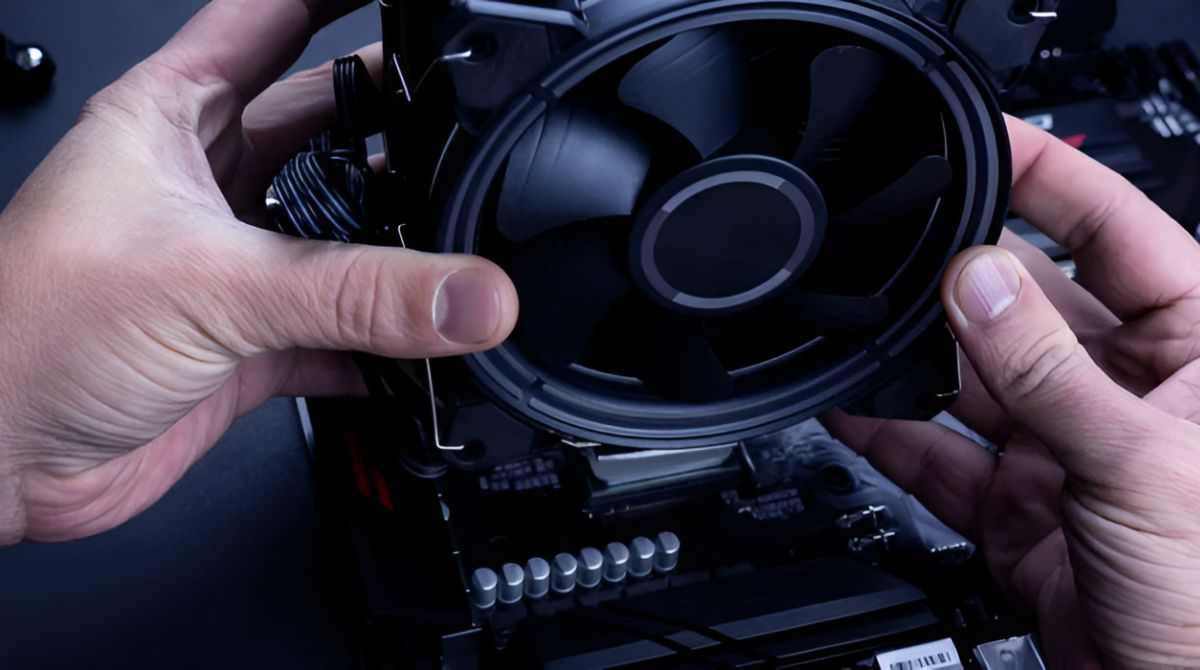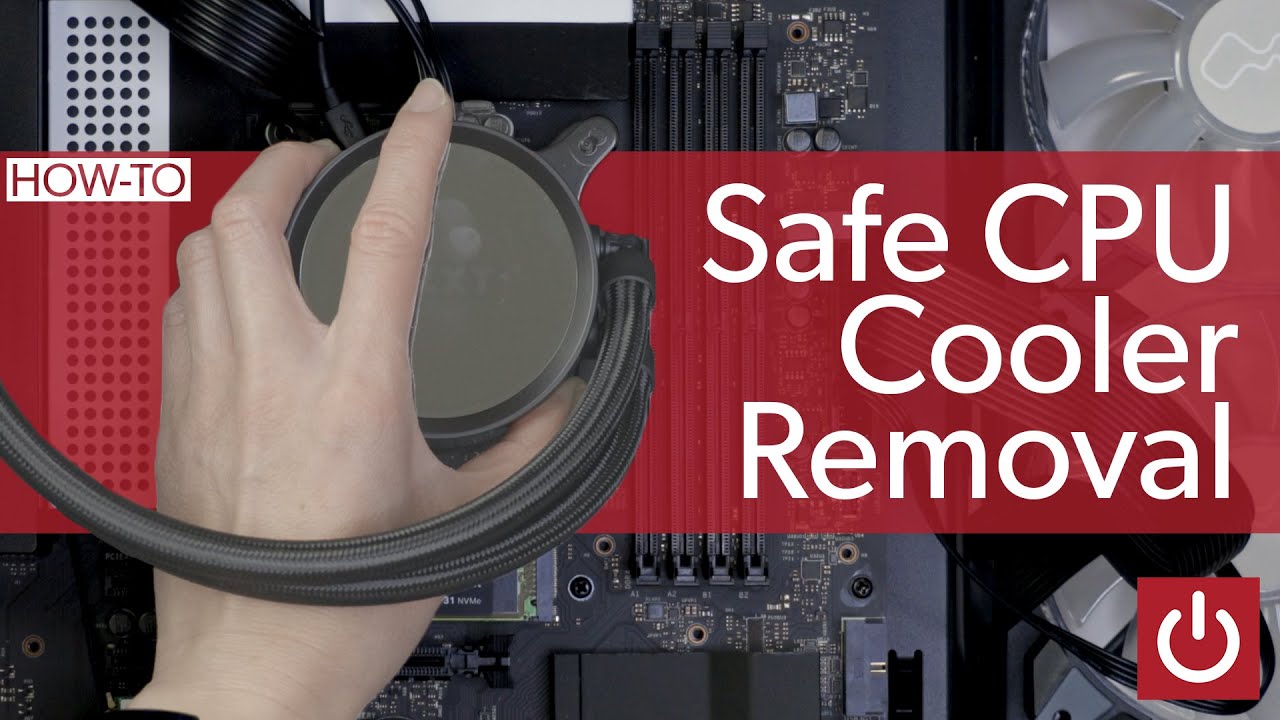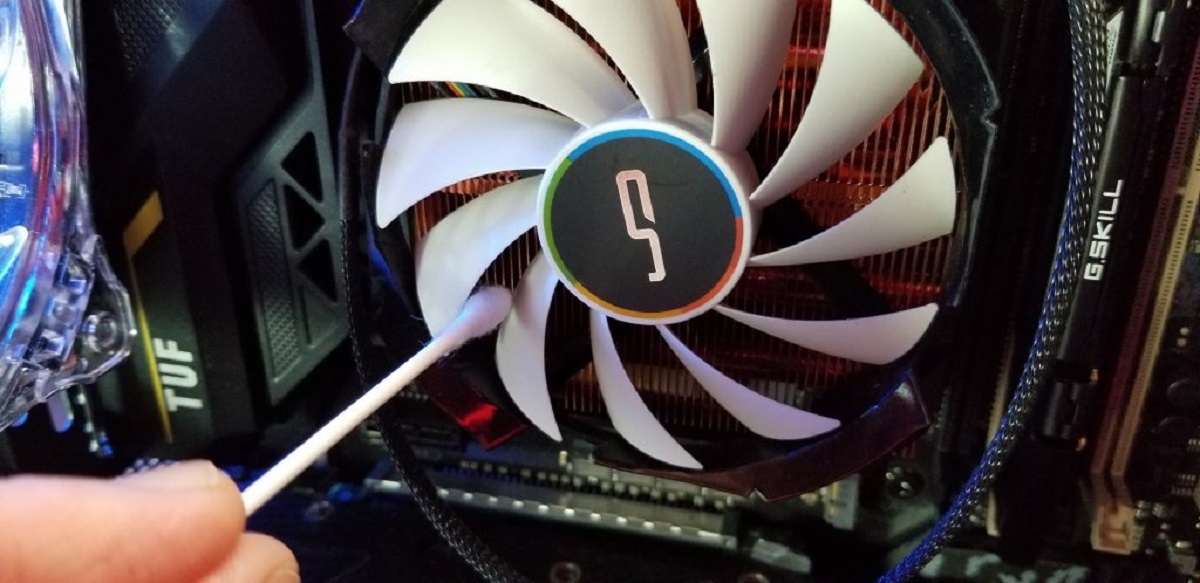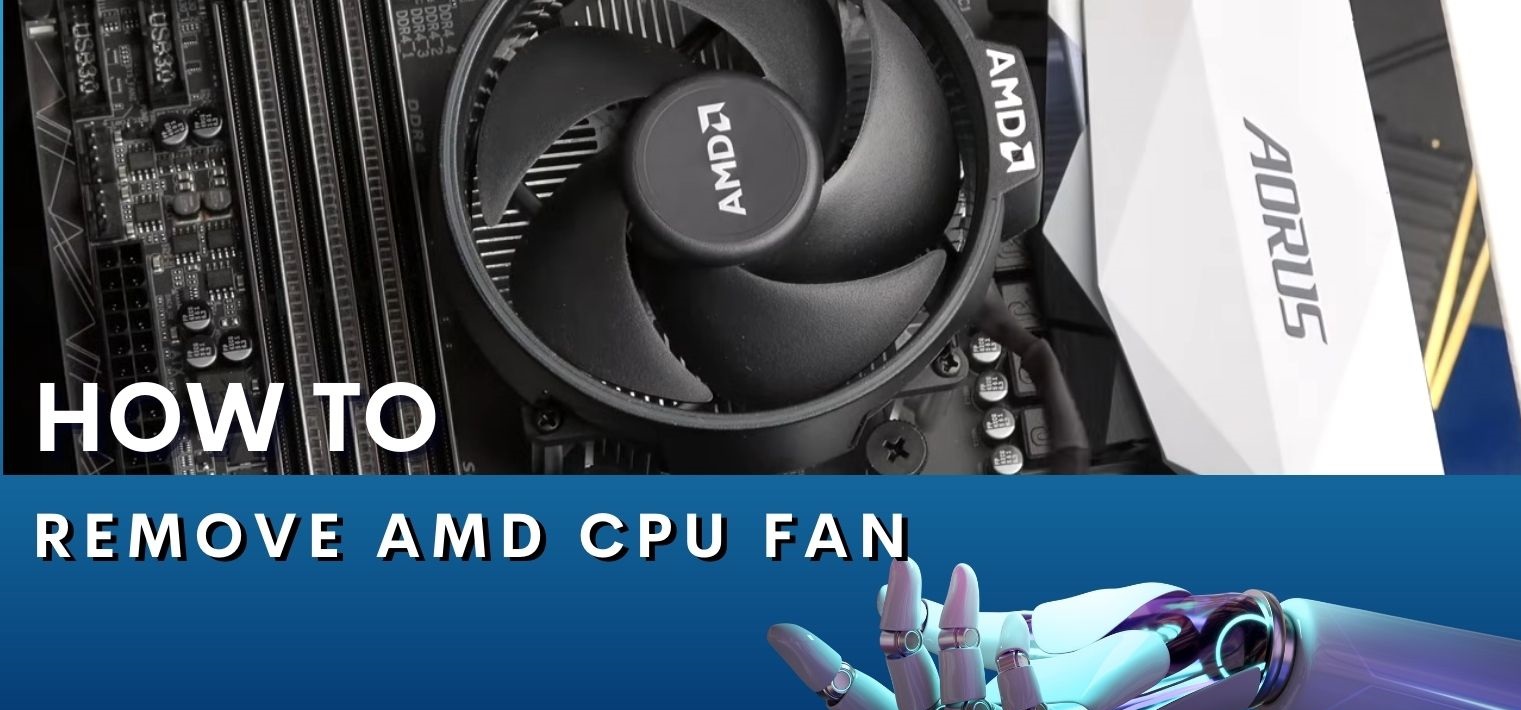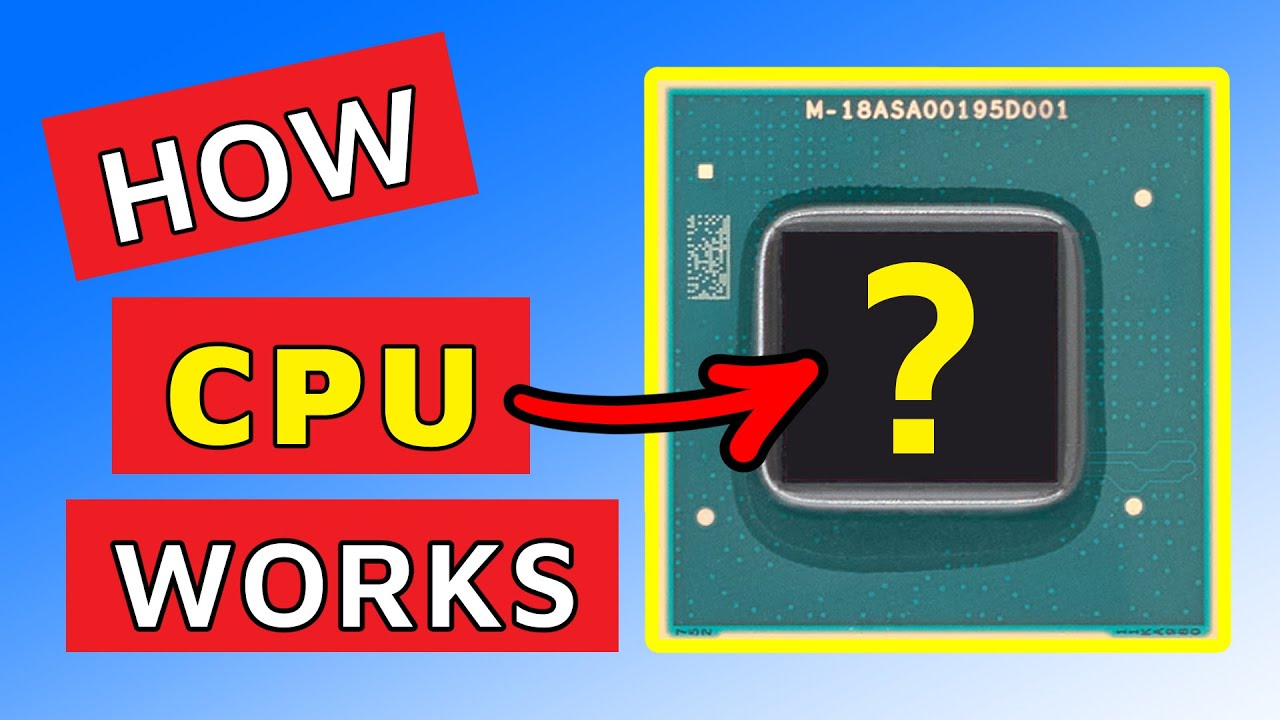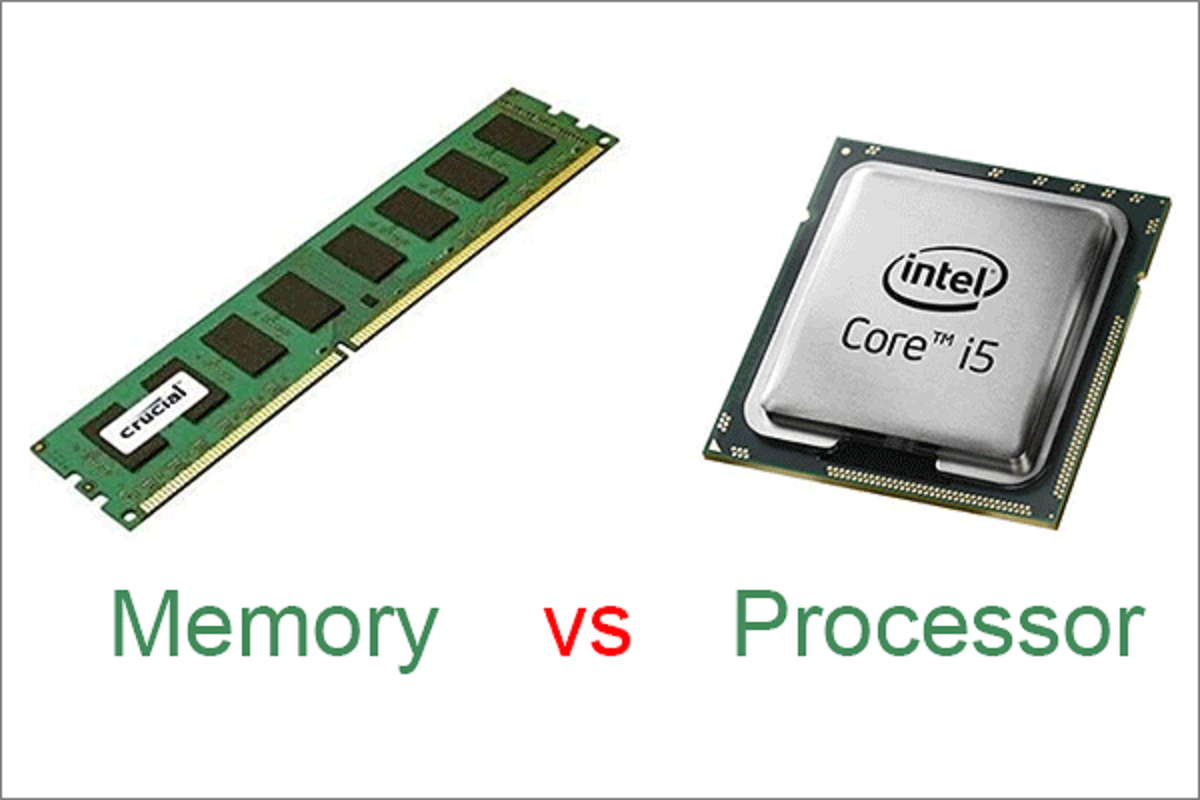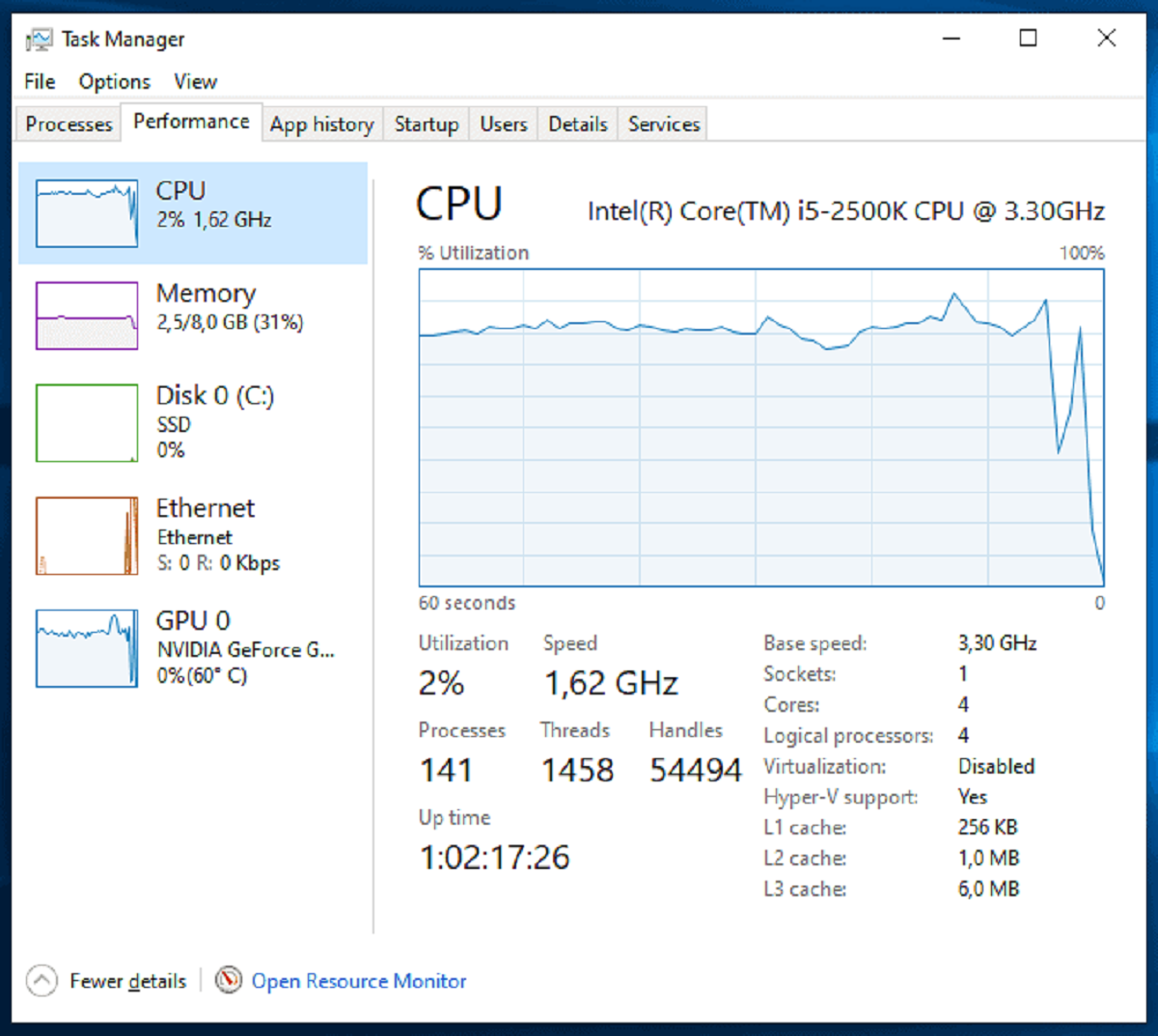Introduction
Welcome to the fascinating world of computers! Whether you’re a tech enthusiast or a casual user, understanding the fundamental components of a computer is crucial. One of the most vital parts of any computer system is the CPU (Central Processing Unit). In this article, we will explore the location of the CPU in different types of computers and devices.
Computers have become an indispensable part of our daily lives. From desktop computers used for work and gaming to laptops and smartphones used for communication and entertainment, these devices have revolutionized the way we live, work, and play. At the heart of these devices lies the CPU, which acts as the brain and powerhouse, executing instructions and performing calculations at lightning speed.
By understanding the basics of a computer system and the importance of the CPU, you will gain a deeper appreciation for the intricate design and functionality of these devices. Join us as we dive into the world of computer hardware and uncover the mysteries of the CPU’s location in various computing devices.
The Basics of a Computer
Before we delve deeper into the CPU and its location, let’s start by understanding the basics of a computer. A computer is a complex machine that processes information and performs various tasks. It consists of several key components that work together seamlessly to provide the functionality we rely on in our daily lives.
At its core, a computer has two primary parts: hardware and software. The hardware refers to the physical components of the computer, including the CPU, memory, storage devices, input/output devices, and more. On the other hand, software encompasses the programs and data that instruct the computer on what tasks to perform.
The CPU, or Central Processing Unit, is often referred to as the “brain” of the computer. It is responsible for executing instructions and performing calculations necessary for the computer to function. Other essential hardware components include the memory, which stores data and instructions temporarily, and the storage devices, such as hard drives or solid-state drives, which provide long-term storage of data.
Input devices like keyboards and mice allow users to provide commands to the computer, while output devices like monitors and printers display the processed information in a readable format. Additionally, there are numerous other components, including motherboards, power supplies, and graphic cards, which contribute to the overall operation of the computer system.
Software plays a crucial role in harnessing the power of the hardware components. Operating systems like Windows, macOS, and Linux allow users to interact with the computer and manage its resources. Applications, such as web browsers, word processors, and games, provide specific functionality and enable users to perform various tasks.
Understanding the basics of a computer system sets the stage for comprehending the role and importance of the CPU. Now, let’s dive deeper into the realm of the CPU, and explore where it is located in different types of computers and devices.
What is a CPU?
A CPU, or Central Processing Unit, is the primary component of a computer that carries out instructions and performs calculations. It is often referred to as the “brain” of the computer because it handles the majority of the processing tasks.
The CPU acts as a central hub that communicates with and controls the other hardware components of the computer system. It fetches instructions and data from the memory, executes the instructions, and stores the results. It handles tasks such as performing mathematical calculations, managing input and output devices, and coordinating the flow of data between different parts of the system.
Inside the CPU, there are several key components that work together to perform these tasks. The most important component is the arithmetic logic unit (ALU), which handles mathematical operations like addition, subtraction, multiplication, and division. The control unit manages the flow of instructions and data, ensuring that the proper operations are carried out in the correct order.
Modern CPUs also have multiple cores, allowing them to perform multiple tasks simultaneously. Each core is like a separate processor within the CPU, capable of executing instructions independently. This technology, known as multi-core processing, significantly improves the efficiency and speed of the computer.
CPU performance is measured in terms of clock speed, which represents the number of cycles per second that the CPU can execute. A higher clock speed generally means faster processing and better overall performance. However, it’s important to note that clock speed is not the sole determiner of performance; other factors such as the number of cores, cache size, and architecture also play a crucial role.
In recent years, there has been a trend towards more energy-efficient CPUs, aiming to minimize power consumption and heat generation. This has led to the development of technologies such as dynamic frequency scaling and low-power idle states, which adjust the CPU’s clock speed and voltage based on the workload to optimize energy usage without sacrificing performance.
Now that we have a clear understanding of what a CPU is and its role in a computer system, let’s explore the significance of the CPU and its location in different types of computers and devices.
The Importance of the CPU
The CPU is a critical component of a computer system and plays a vital role in its overall performance and functionality. Understanding the importance of the CPU will shed light on why it is considered the “heart” of the computer.
First and foremost, the CPU is responsible for executing instructions and performing calculations. It processes data at incredible speeds, allowing the computer to run complex software applications, perform mathematical calculations, and handle various tasks simultaneously. The more powerful the CPU, the faster and more efficient the computer’s performance.
Another crucial aspect of the CPU is its ability to manage and allocate system resources. It controls the flow of data between different hardware components, ensuring seamless communication and efficient operation. The CPU coordinates the activities of other components, such as memory, storage devices, and input/output devices, enabling them to work together in harmony.
Furthermore, the CPU directly affects the user experience. A powerful CPU can handle resource-intensive applications and deliver smooth multitasking capabilities, allowing users to run multiple programs simultaneously without experiencing lag or slowdowns. Whether you’re editing videos, playing graphic-intensive games, or running complex simulations, a robust CPU is essential for a seamless and enjoyable user experience.
The importance of the CPU extends beyond traditional computers to other devices as well. In smartphones and tablets, a powerful CPU enables smooth multitasking, faster app launches, and smoother interaction with the device. In gaming consoles, a high-performance CPU ensures smooth gameplay, realistic graphics, and fast load times.
Moreover, the CPU directly impacts overall energy efficiency. With advancements in technology, CPUs have become more energy-efficient, allowing computers to accomplish more while consuming less power. This not only reduces electricity costs but also contributes to a greener environment by minimizing energy consumption and carbon emissions.
In summary, the CPU is a crucial component of a computer system, serving as the brain and powerhouse behind its operations. Its ability to execute instructions, manage resources, and deliver high performance directly impacts the overall functionality and user experience of the computer. Whether it’s a desktop computer, laptop, smartphone, or gaming console, a powerful and efficient CPU is essential for optimal performance and seamless operation.
Components of a CPU
A CPU, or Central Processing Unit, is comprised of several key components that work together to execute instructions and perform calculations. Understanding these components will give you insight into the intricate design and functionality of the CPU.
1. Arithmetic Logic Unit (ALU): The ALU is responsible for performing mathematical and logical operations, such as addition, subtraction, multiplication, and comparison. It carries out these operations on binary data, the fundamental language of computers.
2. Control Unit (CU): The control unit directs the flow of instructions and data within the CPU. It fetches instructions from memory and carries out these instructions by coordinating the activities of other CPU components. The control unit ensures that instructions are executed in the correct order and that data is processed accurately.
3. Registers: Registers are small, high-speed storage units located within the CPU. These temporary storage locations are used to hold data and instructions during processing. Registers allow for quick access to data, reducing the need to fetch data from slower memory locations.
4. Cache: Cache is a type of memory located on the CPU itself. It serves as a bridge between the CPU and the main memory (RAM). Cache stores frequently accessed instructions and data, enabling the CPU to access them quickly and enhance overall performance. There are different levels of cache, including L1, L2, and L3 cache, each with varying sizes and speeds.
5. Bus Interface: The bus interface connects the CPU to other components of the computer system, such as memory, storage devices, and input/output devices. It facilitates the transfer of data between the CPU and these components by providing pathways for communication.
6. Clock Generator: The clock generator produces a timing signal known as the clock that synchronizes the operations of the CPU. It sets the pace at which instructions and data are processed, allowing for smooth and coordinated execution.
7. Instruction Decoder: The instruction decoder decodes the instructions fetched from memory by the control unit. It interprets the instructions and prepares the CPU for their execution.
These components work together in a harmonious and coordinated manner to carry out the tasks assigned to the CPU. They enable the CPU to process instructions, perform calculations, and manage data efficiently.
Now that we understand the components of a CPU, let’s explore the location of the CPU in different types of computers and devices.
Where is the CPU Located in a Desktop Computer?
In a desktop computer, the CPU is typically located on the motherboard, which is the main circuit board that houses various components of the computer. The CPU is usually positioned in a specific socket on the motherboard, often referred to as the CPU socket or CPU slot.
The motherboard is positioned inside the computer case and is connected to other components, including memory modules, storage drives, and expansion cards, through various connectors and slots. The CPU socket is strategically placed on the motherboard to ensure optimal connectivity and efficient data transfer between the CPU and other components.
The location of the CPU socket may vary depending on the specific motherboard design, but it is generally located near the center or towards one side of the motherboard. The socket is a mechanical interface that allows the CPU to be firmly and securely installed onto the motherboard.
Modern desktop CPUs often feature elaborate cooling mechanisms, such as heat sinks and fans, to dissipate heat generated during operation. These cooling components are typically attached to the CPU itself and can be quite large in size. They are designed to keep the CPU within a safe temperature range, as excessive heat can negatively impact performance and potentially damage the CPU.
It’s worth noting that some high-end desktop computers, especially those used for gaming or specialized tasks, may use a separate CPU cooling solution, such as liquid cooling or advanced heat pipe designs. These cooling systems further enhance the cooling efficiency and performance of the CPU.
Overall, in a desktop computer, the CPU is located on the motherboard, in a designated socket, and is often accompanied by appropriate cooling mechanisms to ensure optimal performance and reliability. The motherboard, CPU, and cooling components work in tandem to form the central processing unit of the computer system.
Where is the CPU Located in a Laptop?
In a laptop, the CPU, or Central Processing Unit, is typically integrated into the motherboard rather than being a separate component. This integration helps to save space and reduce overall power consumption, making laptops more compact and efficient.
The CPU in a laptop is usually located underneath the keyboard and touchpad area, near the center of the device. It is positioned in close proximity to other crucial components, such as the memory modules and the graphics card, to optimize data transfer and improve overall performance.
Due to the limited space inside a laptop, cooling of the CPU is a critical consideration. Laptops utilize various cooling mechanisms to dissipate heat generated by the CPU during operation. These cooling mechanisms may include heat sinks, fans, and heat pipes, which are designed to regulate the temperature and prevent overheating.
Laptop CPUs are often designed with energy efficiency in mind, prioritizing a balance between performance and power consumption. This allows laptops to operate on battery power for extended periods and reduces heat generation, resulting in a quieter and more portable device.
It’s important to note that the accessibility of the CPU in a laptop can be limited. Unlike desktop computers, where CPUs can be easily upgraded or replaced, the integrated nature of laptop CPUs makes them more challenging to access for the average user. If there is a need to upgrade or replace the CPU in a laptop, it often requires the expertise of a professional technician.
Overall, the CPU in a laptop is integrated into the motherboard and is located underneath the keyboard and touchpad area. It works in conjunction with other components to provide processing power and performance in a compact and portable form factor. The cooling mechanisms employed in laptops ensure optimal thermal management, allowing for efficient and reliable operation.
Where is the CPU Located in Other Devices?
In addition to desktop computers and laptops, CPUs are found in a wide range of other devices as well. Let’s explore where the CPU is typically located in some of these devices.
1. Smartphones: In smartphones, the CPU is usually integrated into the mainboard or system-on-a-chip (SoC) design. It is located underneath the display and other key components, such as the memory and modem. The compact size of smartphones requires CPUs that are energy-efficient and capable of delivering high performance within a limited space.
2. Tablets: Similar to smartphones, tablets feature integrated CPUs within the mainboard or SoC. The CPU is positioned behind the display panel, closer to the center or the upper portion of the device. Tablets often employ passive cooling mechanisms or small fans to dissipate heat generated by the CPU during operation.
3. Gaming Consoles: Gaming consoles, such as the PlayStation and Xbox, have the CPU integrated into the motherboard. The specific location may vary depending on the console design, but it is typically situated near the center or towards the back of the console. Gaming consoles require powerful CPUs to handle advanced graphics and intensive processing tasks required for gaming.
4. Smart TVs: Smart TVs feature CPUs integrated into the television’s mainboard. These CPUs are responsible for processing media, running apps, and performing other smart features. In some cases, smart TVs may use SoC designs similar to smartphones and tablets, positioning the CPU near the center or on the side of the board.
5. Internet of Things (IoT) Devices: IoT devices, such as smart home devices, wearables, and connected appliances, feature CPUs integrated within their circuitry. The CPU is positioned on the PCB (printed circuit board) based on the size and design of the device. IoT devices often use low-power CPUs to conserve energy and prolong battery life.
While the specific location of the CPU in these devices may vary, the integrated nature of the CPUs allows for efficient use of space, improved power consumption, and increased performance capabilities. The CPUs in these devices work in conjunction with other components to provide the desired functionality and performance required by each device type.
Conclusion
In conclusion, the CPU (Central Processing Unit) is a fundamental component of a computer system, serving as its “brain” by executing instructions and performing calculations. It is located in different positions depending on the device type.
In desktop computers, the CPU is typically located on the motherboard, in a designated socket. It is accompanied by cooling mechanisms to maintain optimal temperature and performance. In laptops, the CPU is integrated into the motherboard, usually positioned beneath the keyboard and touchpad area. Cooling mechanisms, such as heat sinks and fans, are employed to dissipate heat effectively.
In other devices such as smartphones, tablets, gaming consoles, smart TVs, and IoT devices, the CPU is also integrated into the motherboard or system-on-a-chip design. The specific positions vary, but they are strategically placed to optimize space, power efficiency, and overall performance.
Understanding the location and significance of the CPU in these devices enhances our appreciation for the intricate engineering behind computer systems and the role the CPU plays in their operation. Whether it’s a desktop computer, laptop, smartphone, gaming console, or IoT device, the CPU remains the critical component that powers and processes information, making these devices indispensable in our daily lives.
As technology continues to evolve, CPUs are becoming more powerful, energy-efficient, and compact. Advancements in CPU design and cooling mechanisms allow for higher performance, improved multitasking capabilities, and enhanced user experiences.
So, the next time you use your computer, smartphone, or any other electronic device, remember that it’s the CPU working diligently behind the scenes, processing your instructions and ensuring everything runs smoothly.







